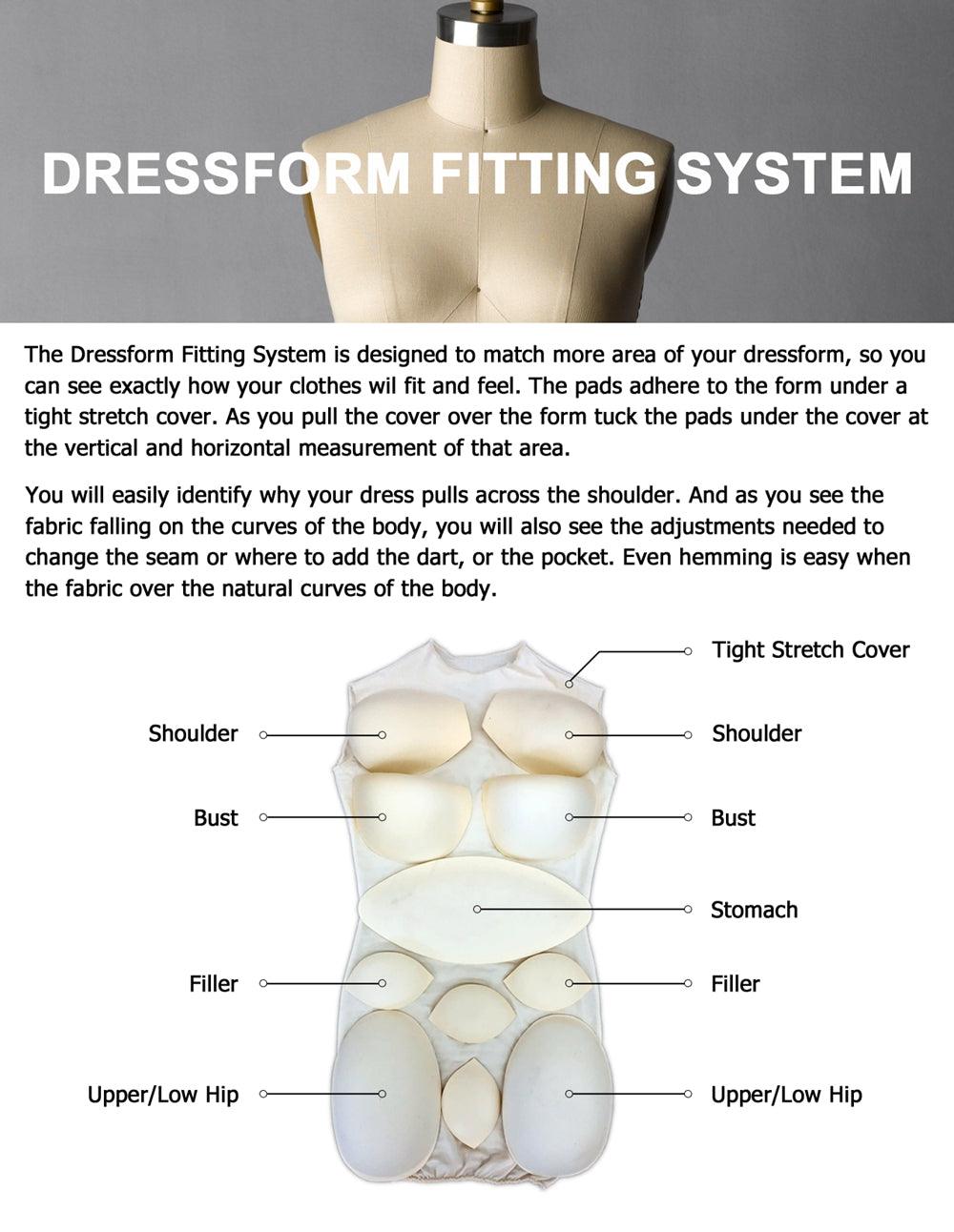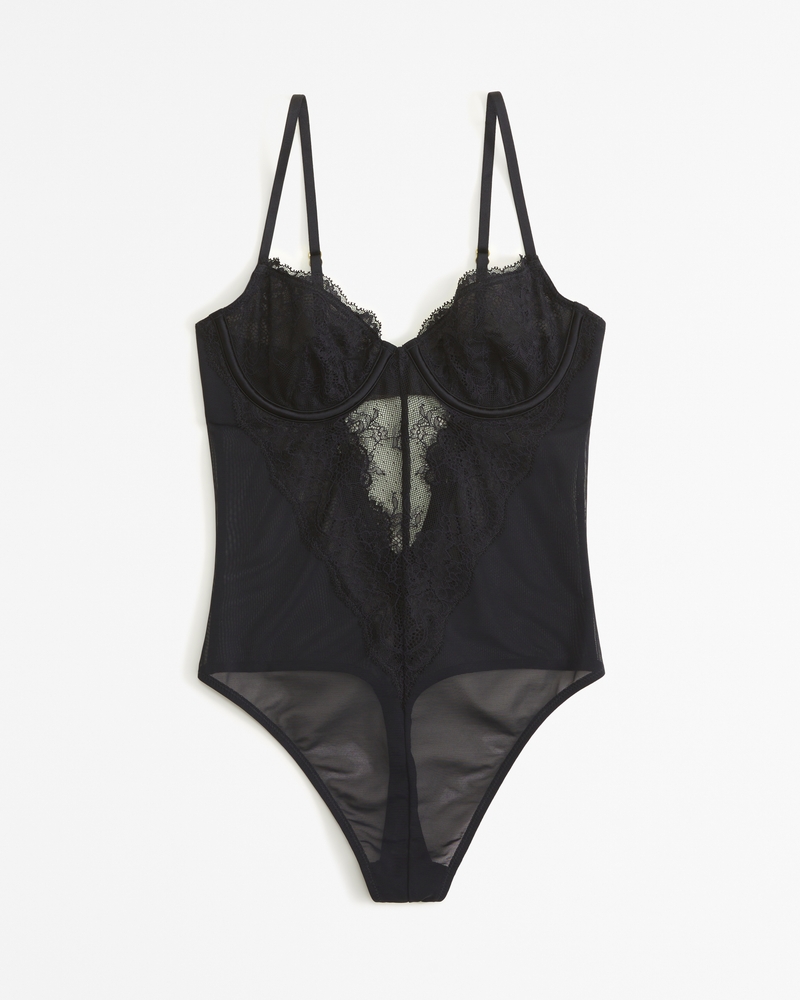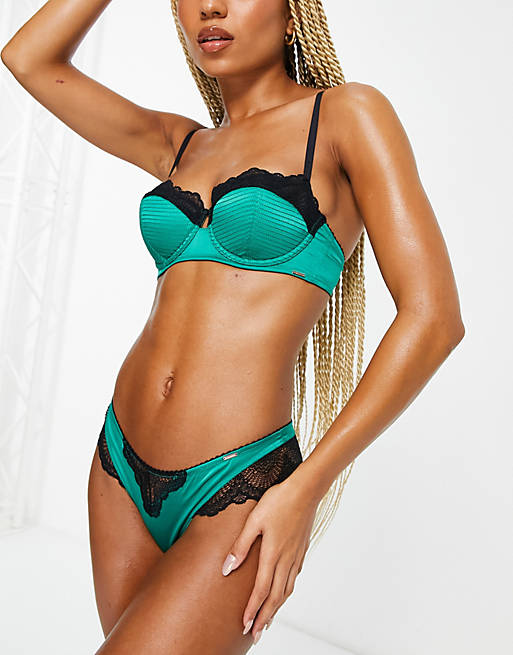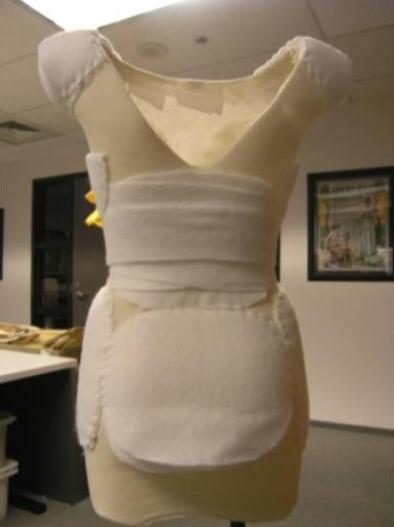
A well-designed and well-installed museum exhibit appears effortless, as if the objects on display were always meant to be viewed in that exact context. Despite this apparent ease, museum exhibitions require a tremendous amount of long-range planning. Christina Johnson and Kevin Jones, co-curators of High Style: B Bloomingdale and the Haute Couture spent three years planning the exhibition. An important aspect of their planning was deciding how to best display the garments. As you've seen from the images we post on this blog, the FIDM Museum has an extensive collection of dress forms and mannequins. Christina and Kevin decided, however, that B Bloomingdale's haute couture garments would be best displayed on floating forms. Unlike mannequins or dress forms, floating forms do not extend beyond the boundaries of the garment. This allows you to focus entirely on the garment, without the distraction of legs, arms or facial characteristics. As you might imagine, creating floating forms is a complicated process. All of the floating forms used to display the garments in High Style were created by Carolyn Jamerson, FIDM Museum Study Collection Manager. Carolyn worked on the floating forms for almost a year! She recently gave a presentation about the process and we're going to feature a brief overview today.
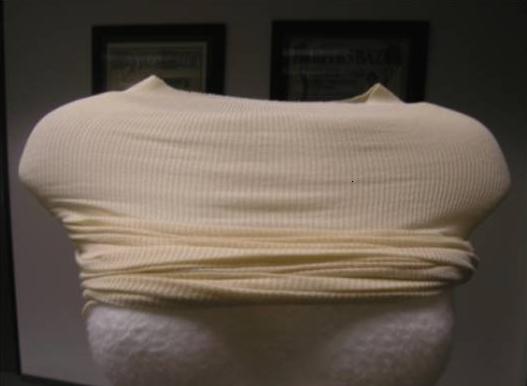
Floating forms - FIDM Museum
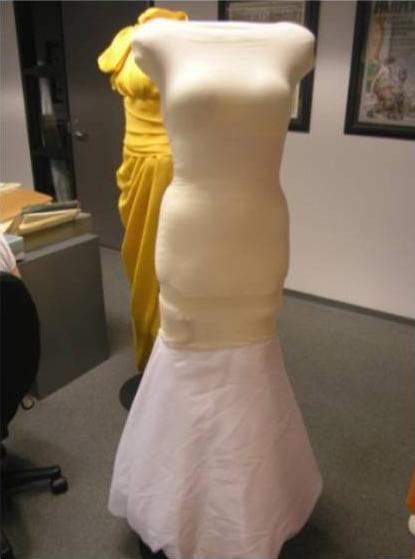
Floating forms - FIDM Museum

Floating forms - FIDM Museum

Floating forms - FIDM Museum
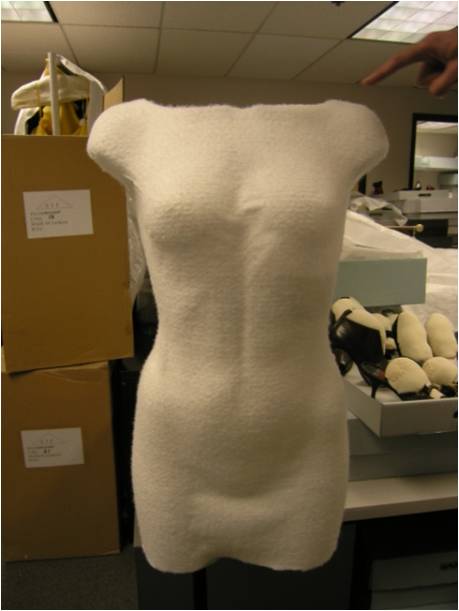
Floating forms - FIDM Museum

PDF) The Installation of Clothes on “Invisible Mannequins“
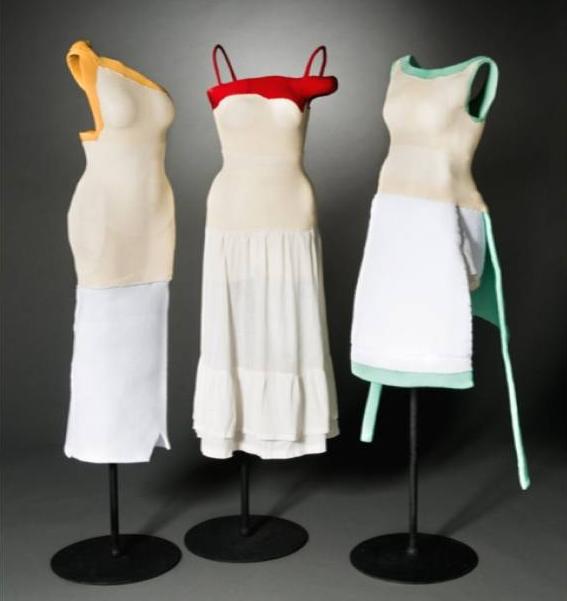
Floating forms - FIDM Museum

PDF) The Installation of Clothes on “Invisible Mannequins“

Floating forms - FIDM Museum

PDF) The Installation of Clothes on “Invisible Mannequins“

PDF) The Installation of Clothes on “Invisible Mannequins“

PDF) The Installation of Clothes on “Invisible Mannequins“

PDF) The Installation of Clothes on “Invisible Mannequins“



